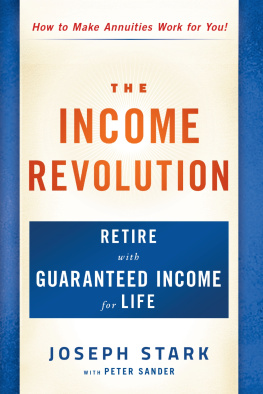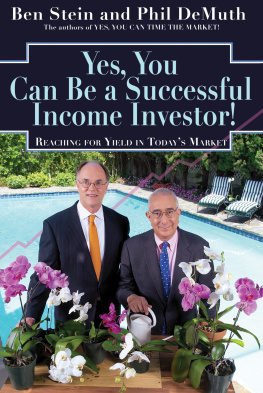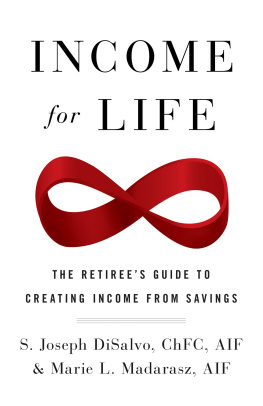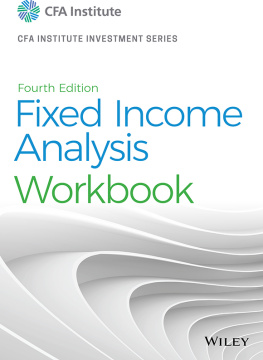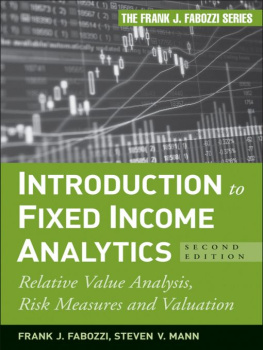(In Your Best Interest) is full of excellent information and advice thats presented in a smart and highly readable format. If you want to learn more about the fixed-income markets and how they really work, Hanks book is a must read!
Debra A. Hewson, President and CEO, Odlum Brown Limited
Ive always been impressed by Hanks knowledge of the bond market.
Wise, justifiably opinionated, and clearly written accessible to the ordinary investor.
Thomas Kierans, Chair of the Social Sciences and Humanities Research Council and a Senior Fellow of Massey College at the University of Toronto
Hank Cunningham is a widely acknowledged authority on Canadian fixed-income investing.
Robert C. Caldwell, Managing Director (BFS), Macquarie Private Wealth Inc.
In my opinion, it is the essential guide for anyone interested in learning about our fixed income markets and in particular the Canadian bond market.
Chapter 2
How Do I Get Started?
It is likely that you already have a relationship with an FI and/or an IA. It may be a bank, a bank-owned investment dealer, an independent brokerage firm, a mutual fund company, a financial planning company, a life insurance company, or a trust company. All of these entities, through their IAs or agents, first attempt to sell you their products, even if they are not suitable for you. Very few IAs (my guess is 10 percent) actually have your best interests in mind. Therefore, you will have to arm yourself with all the knowledge you can and find an experienced IA to act for you.
Your IAs firm will have lots of educational material available and there are a plethora of websites to help you along. I have included this list in Appendix A. These websites offer all kinds of analytical tools. The daily newspapers offer some commentary, and television shows such as CNBC and the Business News Network (BNN) have expert commentators on a regular basis, including me. There are books available, and your IAs firm will likely offer daily, weekly, and monthly bond market commentary. Over time, all of this information will stand you in good stead as you will have a good knowledge base.
So, armed with all this knowledge, you should be able to get your broker/advisor to do what you want, shouldnt you? Not necessarily! Each pillar of the financial services industry (banks, trust companies, mutual fund companies, life insurers, investment dealers, and advisors/planners) has a vested interest in selling you what is in its best interest, not yours. Rare is the organization (or individual) that actually listens well enough to ascertain the needs of the client and takes care to make sure those needs are met, even at the expense of a sale that might produce greater near-term reward.
How and where do you find such people? The number one method is referral, from an IAs satisfied clients or from lawyers, accountants, and friends. Ask, ask, ask, and eventually you will find someone who will help you. At some point, you will likely receive what are called cold calls. These come from IAs just starting out who are trying to build their books. It is in your best interest to find IAs with experience and well-established books of business so that you are well served. It is a further bonus if they offer fee-based services and thus are not driven by the need to generate commissions on every trade. It is possible that you may not find such IAs or your account may not be large enough for them. The major investment dealers offer superb training for new IAs, which includes the fixed-income markets. Therefore, you may find a newer IA who might be suitable for you, but remember to ask, ask, ask.
IAs books of business refer to how many clients they have and what the assets of those clients total.
This market remains a decentralized or over-the-counter market. With myriad issues to choose from and with mammoth trading volume and institutional dominance, it becomes extremely important to select the right firm and then the right adviser. The choice of a firm must be made before you pick an adviser. Extra time spent on this decision can mean significantly enhanced returns and thus a higher standard of living and more comfortable retirement!
The first step is to determine whether an investment dealer or organization takes the retail fixed-income business and its participants seriously. Look for FIs who advertise a special focus on fixed-income needs. Develop basic questions to ask would-be financial advisors. Here are some common questions, as well as the answers you should be looking for.
Q: Is the retail fixed-income desk a captive of the wholesale desk or is it master of its own destiny?
A: To properly serve individual investors, the retail fixed-income desk should be focused on providing IAs and their clients with good advice and competitive pricing.
Q: Is it a stand-alone profit centre or is the desks compensation linked to the overall growth of the firms fixed-income business?
A: A desk that is motivated to grow the business of the IAs will offer the best overall service.
Q: What percentage of your business is fixed-income?
A: It should be in the 20 percent to 50 percent range.
Q: How is the Bank Rate set?
A: You should be told that its set at regularly scheduled meetings of the Bank of Canada ( bankofcanada.ca ).
Q: Assuming I have $100,000 in my RRSP, what kind of fixed-income portfolio would you recommend in individual securities?
A: IAs should mention stripped bonds (zero coupons), corporate bonds, real return bonds, and the concept of laddering, perhaps Exchange Traded Bond Funds (ETFs), and should not suggest bond mutual funds.
Q: What is the difference between semi-annual and annual yield?
A: It depends on the level of nominal rates. It is an important question, since GICs, for example, are quoted in annual yield terms while most bonds are offered in semi-annual terms. Most firms will convert one to the other for fair comparison. It is in your best interest to ensure that you are being offered an apples-to-apples comparison, since annual yields may appear to be higher than semi-annual yields when, in fact, they may be the same or even lower.
Q: How much commission do you charge on bond trades?
A: If they answer at all, it should be between 0.5 percent and 1 percent. They may be fee based, which is expensive for fixed-income portfolios.
Q: Do you know what duration is?
A: This is important as it represents the risk and volatility of a bond. It is the average term of a bond, including the interest payments.
Q: What is the size of your book and how many clients do you have?
A: A minimum size of $100 million and perhaps 250 clients would indicate a successful IA and one who, therefore, would not need to do frequent transactions to make a living. Ask if they are willing to do a price comparison test with other FIs. It may not be easy to get these answers, but persist. Ask friends, read the financial papers, listen, observe.
Q: If I find the right advisor, how easy or difficult is it to move my account from my existing financial institution?
A: Naturally, FIs are not keen to see customers leave and so they do not make it easy to do so. In days gone by, it was a genuine hassle to move your account. Now the rules have changed and your account must be moved, in cash or kind, within days or the FI faces fines. It also helps that almost all securities are book-based, so this transfer becomes a simple matter of a computer transfer plus the inevitable paperwork, of course. The FI that you are moving to will expedite the transfer.
To move your account, first open a new account with the new FI. Once that is done, complete, with the help of your new IA, a Request for Transfer Form, which serves notice to your former firm that you would like to transfer your account. The former firm must reply within two days and deliver all the securities and cash, within ten days. For a complete description of this process, visit www.IIROC.ca and look in the Investor Education section.


